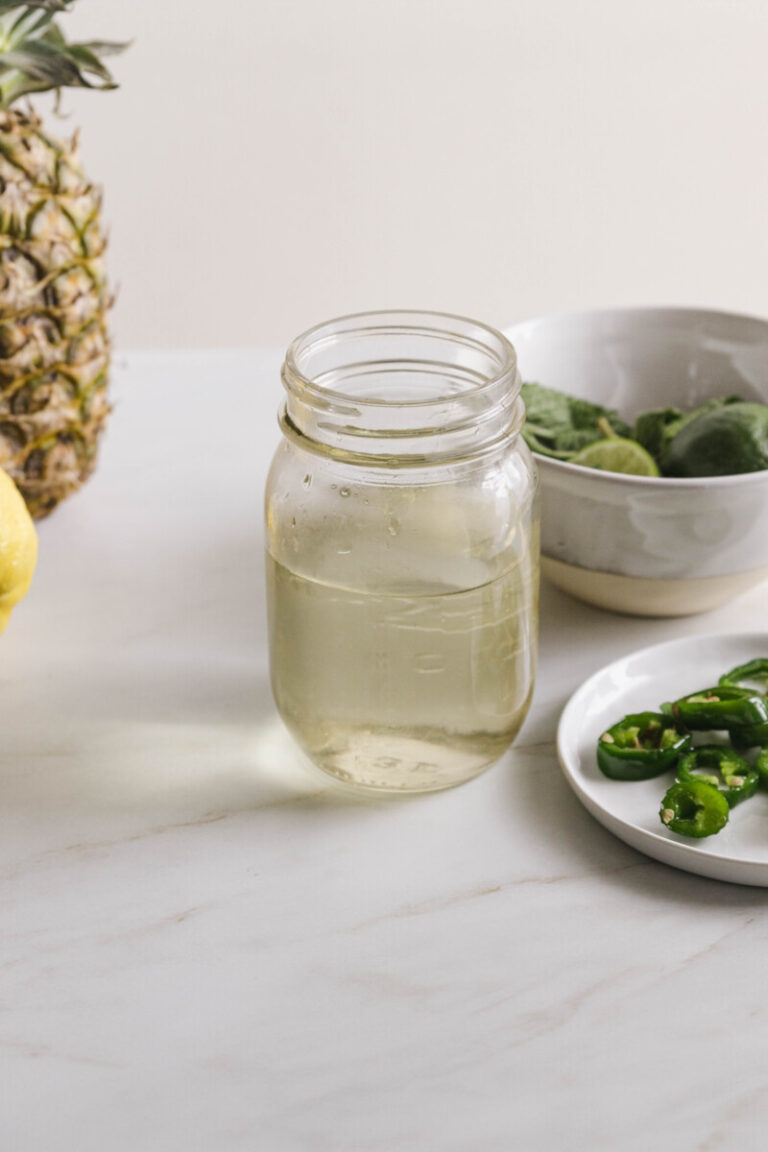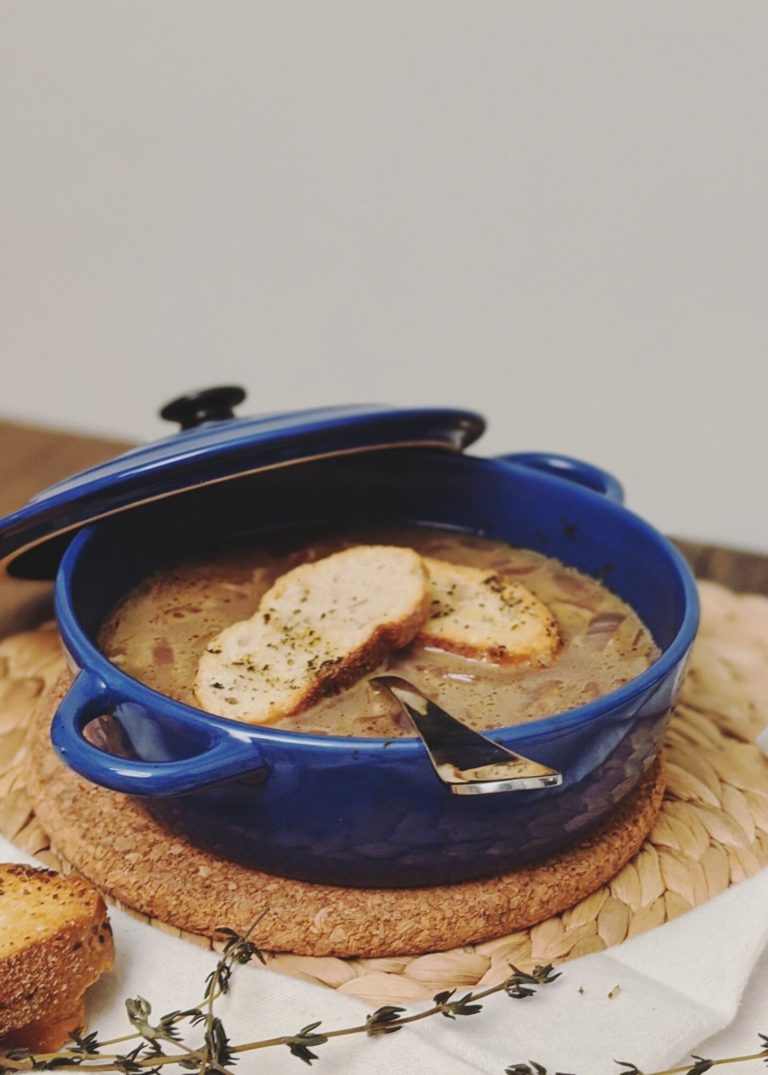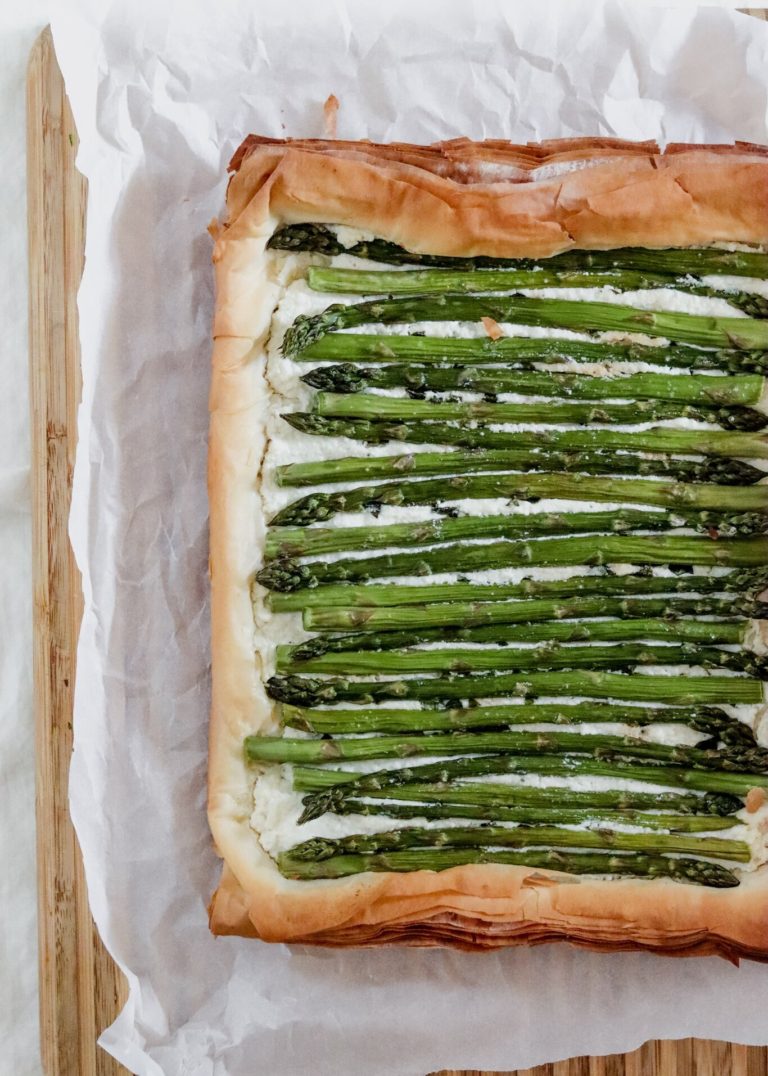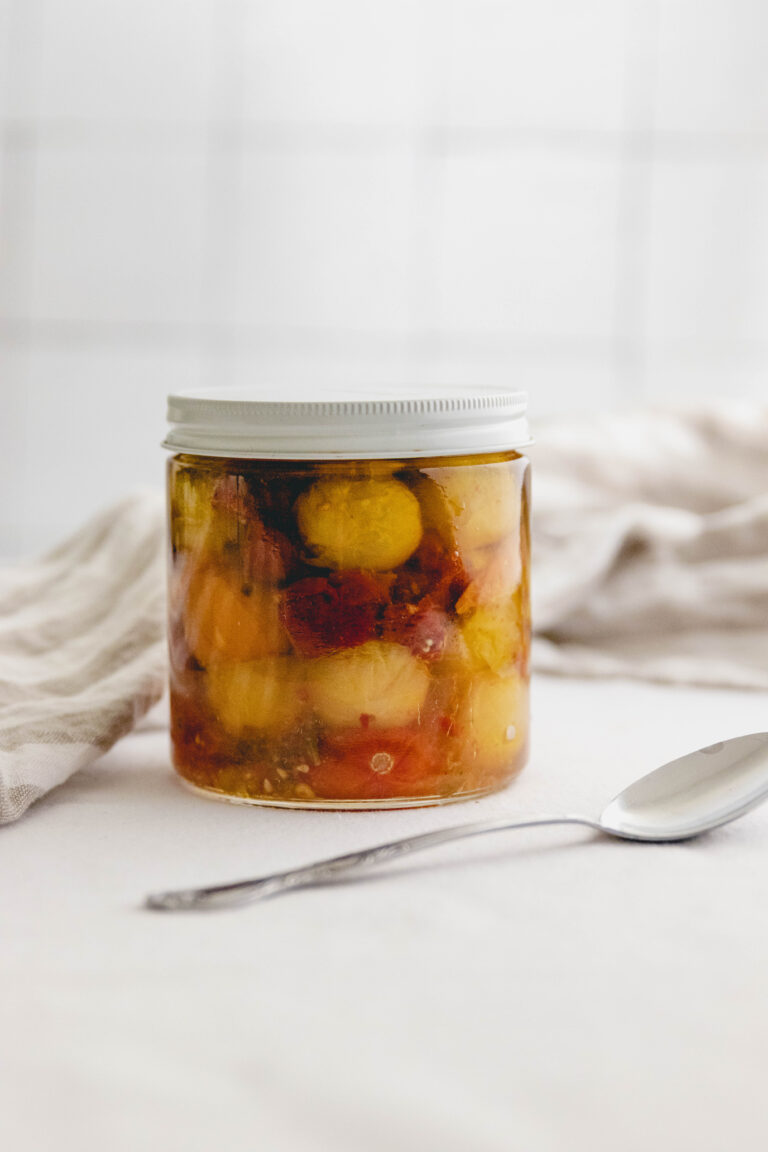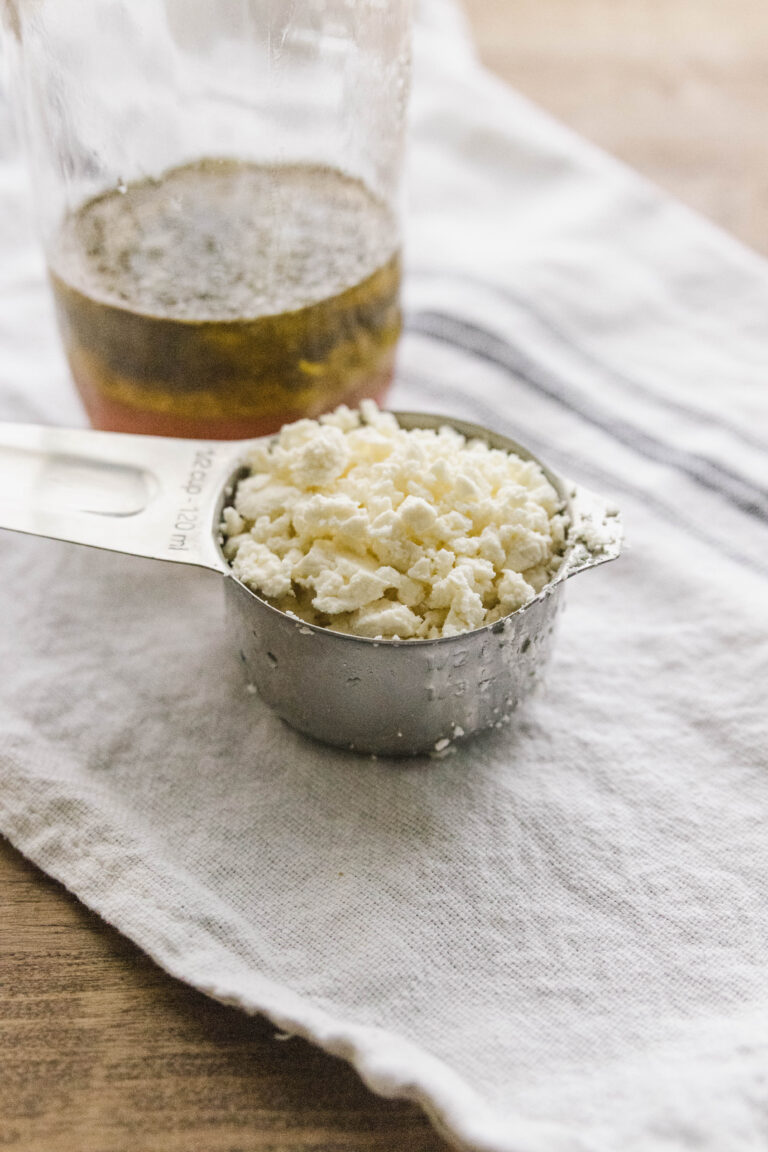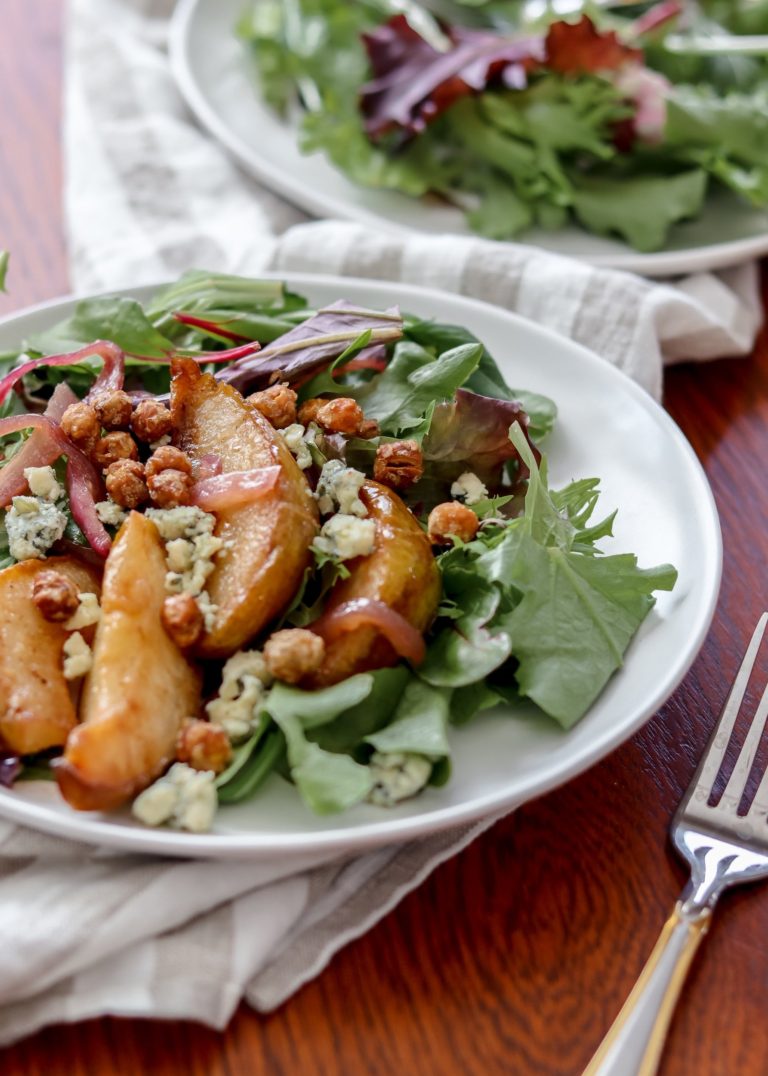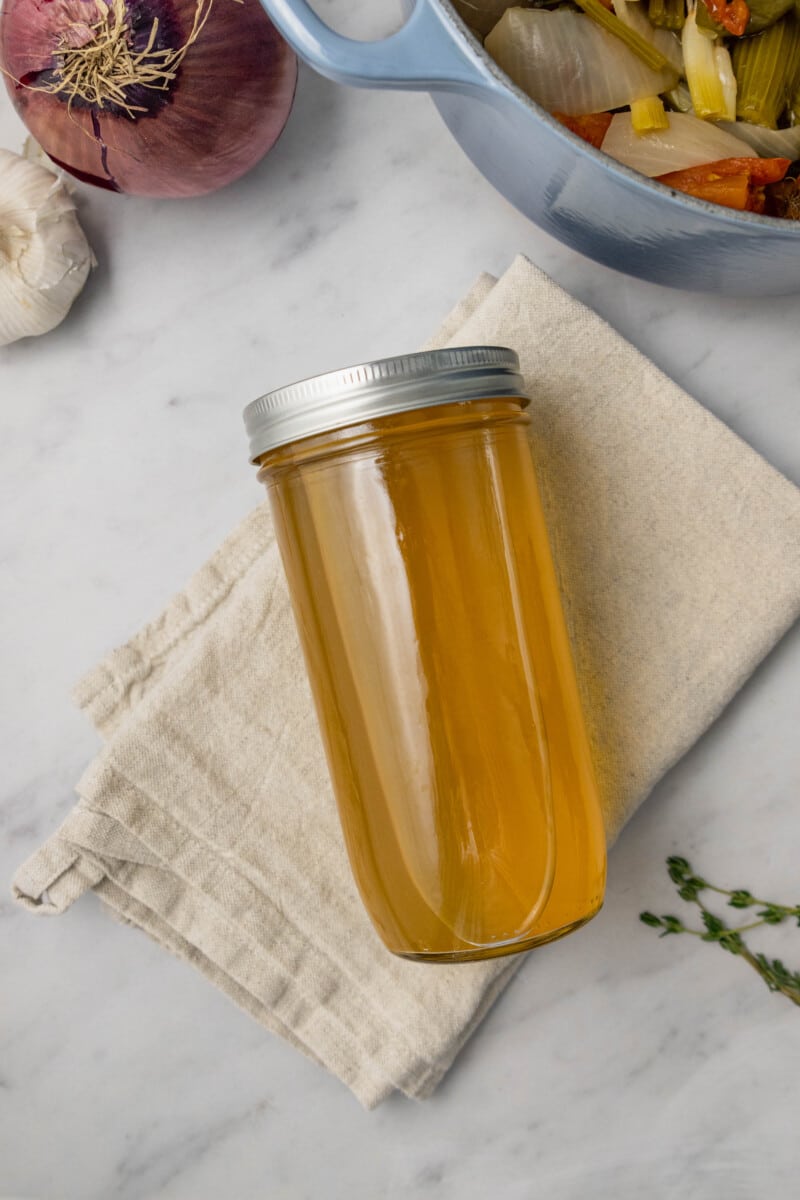
Today, I’m thrilled to share a cornerstone recipe that every home chef should have in their repertoire: Homemade Vegetable Broth using kitchen scraps. This simple broth recipe is a perfect example of taking a step towards more sustainable cooking and learning to maximize flavour from what you might have otherwise tossed out. As you might know, I have a passion for simple, impactful recipes and a knack for infusing lifestyle elegance into daily routines. With years of experience being a home chef and recipe developer, I’m here to show you how simple it is to create a more delicious life, one recipe at a time.
Why Make Your Own Vegetable Broth vs Buying It
As someone who has built a career around simplifying gourmet cooking, I focus on the need for minimal ingredients without sacrificing taste. This homemade vegetable broth epitomizes that philosophy. It’s a testament to how easy, economical, and eco-friendly cooking can be. By using vegetable scraps we often throw away, we’re not just making a broth; we’re making a statement about mindful cooking and eating. Not only is it healthier than store-bought (which is often loaded with sodium and other preservatives), it’s a small step towards being more sustainable in your home.
How to Make Vegetable Broth
This homemade vegetable broth starts in the most humble way possible – with the scraps of your everyday kitchen vegetables. Leftover red and green peppers, onions, green onions, garlic, thyme, rosemary, carrots, celery, and tomatoes find a second life in this flavorful broth. I keep a freezer-safe bag in my freezer, filling it with these odds and ends until it’s time to brew a fresh batch. This approach not only reduces waste but ensures you have a rich, flavorful base for soups, stews, and more, ready at a moment’s notice.
Ingredients for Vegetable Broth
- Leftover vegetable scraps (peppers, onions, green onions, garlic, thyme, rosemary, carrots, celery, tomatoes)
- Water
- A couple of bay leaves (optional)
- Salt to taste
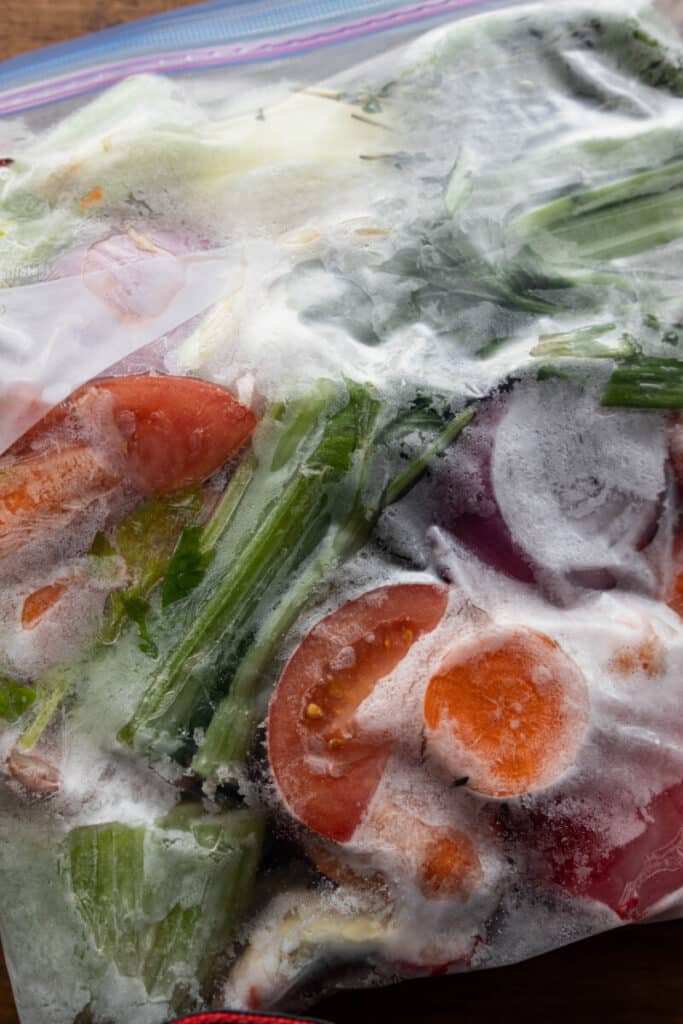
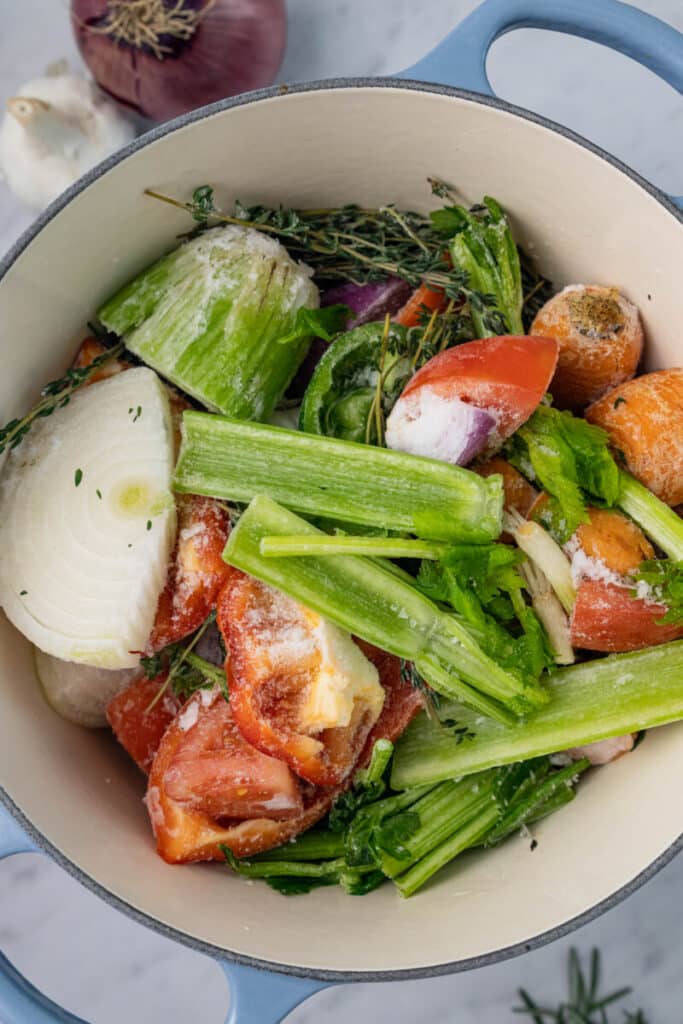
What Not to Add in Homemade Vegetable Broth
While I encourage creativity when making this recipe, there are certain ingredients you might want to leave out. Cruciferous vegetables like broccoli, cabbage, and Brussels sprouts can infuse a strong, sometimes bitter flavour that might not blend well with all dishes. Also, starchy vegetables such as potatoes and turnips can make your broth cloudy and overly thick, which affects its texture and appearance. Please avoid overly ripe or spoiled vegetables since they can also contribute unwanted flavours, making your broth less appealing.
How to Make Your Own Vegetable Broth
- Collect and Prep Your Scraps: Keep a dedicated space in your freezer for saving vegetable scraps. When you have enough (a full large freezer bag is a good measure), you’re ready to start.
- Add to a Large Pot: In a large pot, combine your frozen veggie scraps with enough water to cover them by an inch. I recommend adding a couple of bay leaves for an extra layer of flavour.
- Simmer to Perfection: Bring the pot over medium heat until it reaches a gentle boil, then reduce the heat to let it simmer. Cover and cook for 3 hours; the longer it cooks, the more flavorful it will be.
- Strain and Store: Once you’re satisfied with the taste, strain the broth through a fine mesh sieve to remove the vegetable pieces. Season with salt to your liking.
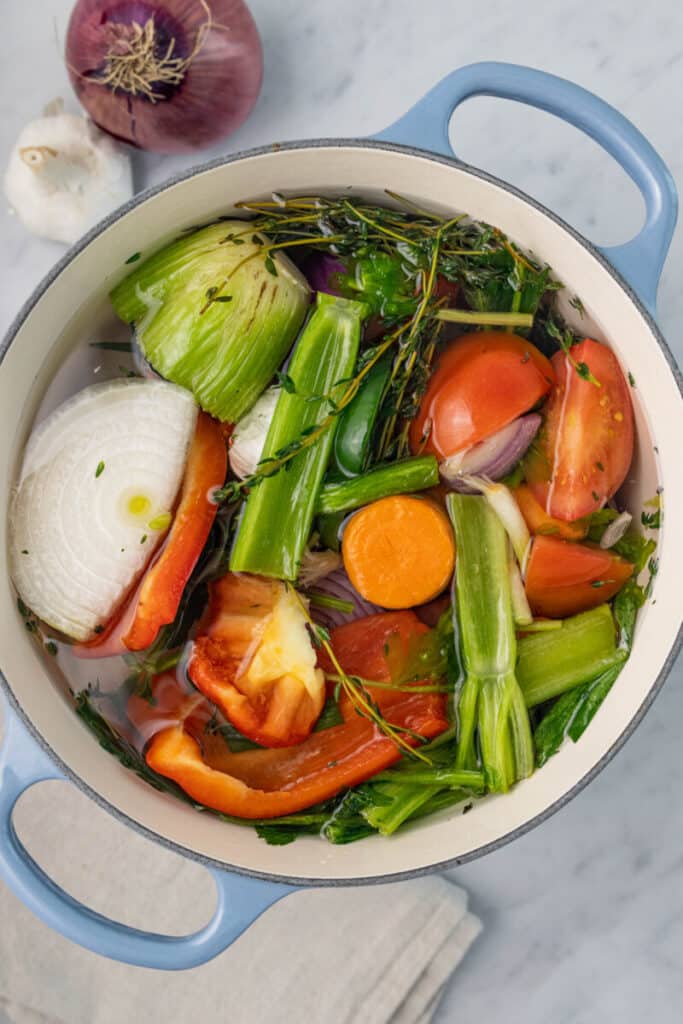
Tips for How to Make Vegetable Broth
- Variety is Key: The more variety in your vegetable scraps, the more complex and interesting the flavour of your broth will be.
- Roasting Option: For an even deeper flavour, consider roasting your vegetable scraps in the oven before adding them to the pot.
- Instant Pot/Slow Cooker Adaptation: This recipe can easily be adapted for an Instant Pot or slow cooker, reducing the cooking time or allowing you to set and forget, respectively.
How to Store and Freeze Vegetable Broth
After making your beautiful, homemade vegetable broth, you want to ensure it lasts as long as possible. Proper storage not only extends the life of your broth but also preserves its rich flavours and nutritional benefits. Here’s how to do it effectively:
Refrigerating Your Broth
- Cool It Down: Allow your broth to come to room temperature after cooking. This prevents condensation from forming in the container, which could dilute the flavour.
- Airtight Containers: Transfer the broth to airtight containers. Glass jars are my go-to for this, but if you use them, leave about an inch of space at the top for expansion if you later decide to freeze it.
- Label It: Mark the containers with the date. Your homemade vegetable broth will stay fresh in the refrigerator for up to 5 days.
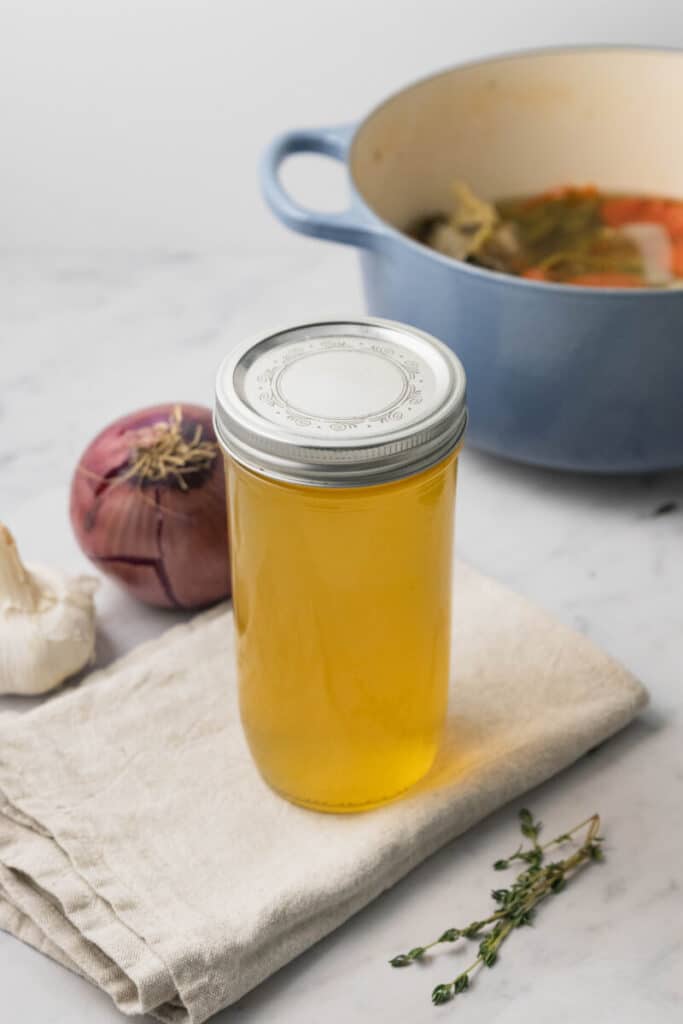
Freezing Your Broth
- Freeze in Portions: Consider how you typically use broth in recipes and freeze it in those portion sizes. Ice cube trays are perfect for small amounts, while larger silicone molds or freezer-safe bags work for bigger portions.
- Flat Freeze: If using bags, I lay them flat in the freezer until solid. Once frozen, you can stack them to save space.
- Thawing: When you’re ready to use the broth, you can thaw it overnight in the refrigerator or use the defrost setting on your microwave. For soups and stews, you can often add the broth directly to the pot from frozen.
Additional Tips:
- Keep your oldest broth towards the front of your fridge/freezer to use it first and prevent waste.
- Never refreeze thawed broth. If you’ve defrosted more than you need, it’s better to find another use for it than to refreeze.
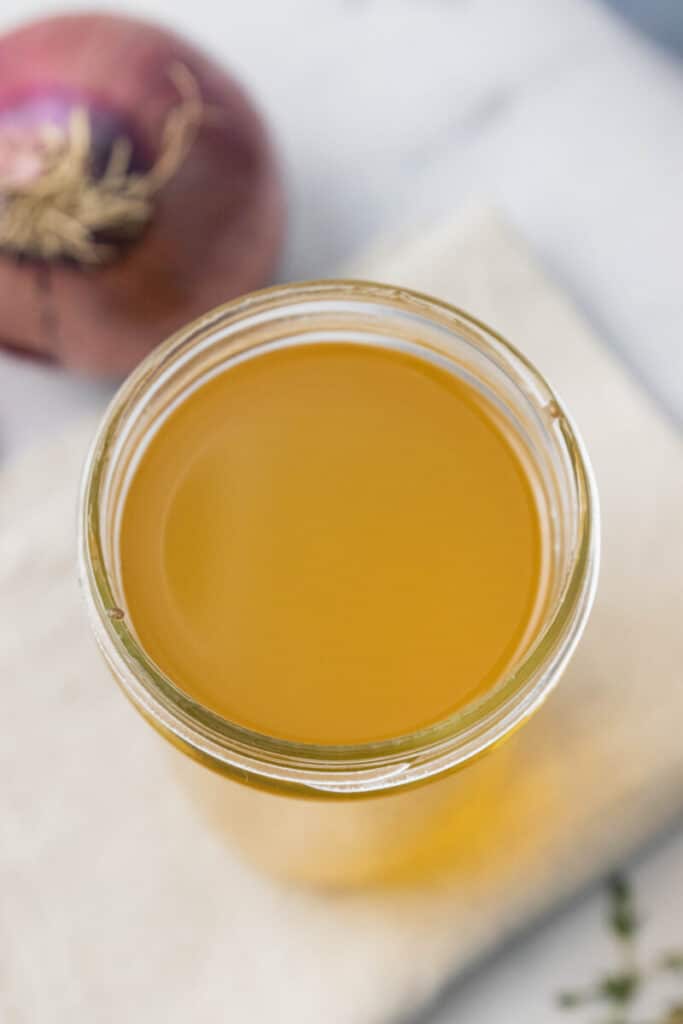
Nutritional Information
This homemade vegetable broth is not only rich in flavour but also packed with vitamins and minerals from the variety of vegetables used. It’s a low-calorie, gluten-free option that adds depth to any dish without added preservatives or sodium found in store-bought versions.
Ways to Use Homemade Vegetable Broth
This Homemade vegetable stock is incredibly versatile since it can enhance tons of dishes with its deep flavours and nutritious profile. Here are a few of my favourite ways to use this liquid gold in the kitchen, proving that a simple pot of broth can be the secret ingredient to elevate your meals:
1. Soups and Stews
The most obvious and perhaps the most transformative use of vegetable stock is as the base for soups and stews. Whether you’re simmering a classic vegetable soup, a hearty lentil stew, or an exotic curry, starting with a rich, homemade stock takes the dish from good to gourmet with no effort.
2. Cooking Grains
Swap water for vegetable stock when cooking grains like rice, quinoa, or barley. This simple substitution infuses your grains with a subtle flavour and richness that water alone can’t achieve. It’s a game-changer for pilafs, risottos, or even your next batch of rice for a stir-fry.
3. Sauces and Gravies
Take your sauces and gravies to the next level with the depth and complexity of homemade vegetable stock. Whether you’re making a light, herby sauce for pasta or a rich, savoury gravy for potatoes, the stock will add layers of flavour that make your dish stand out.
4. Braising Liquid
Vegetable stock also makes an excellent braising liquid for vegetables, beans, and legumes. Braising in stock, whether you’re working with root vegetables like carrots and parsnips or preparing a pot of beans, it infuses a gentle flavour that water alone cannot provide. This makes your dishes richer and more satisfying.
5. Steam Roasting
Add a splash of vegetable stock to your roasting pan when cooking vegetables or tofu in the oven. The stock will create a steamy environment that helps cook your ingredients while infusing them with flavour, resulting in tender, juicy, and deliciously seasoned dishes. Trust me, this one is a game changer.
7. Revitalizing Leftovers
Have you ever reheated leftovers and there was just something missing? Well, revive leftovers by adding a splash of vegetable stock before reheating. This not only prevents the food from drying out but also adds moisture and flavour, making yesterday’s meal taste just as good, if not better, the second time around.
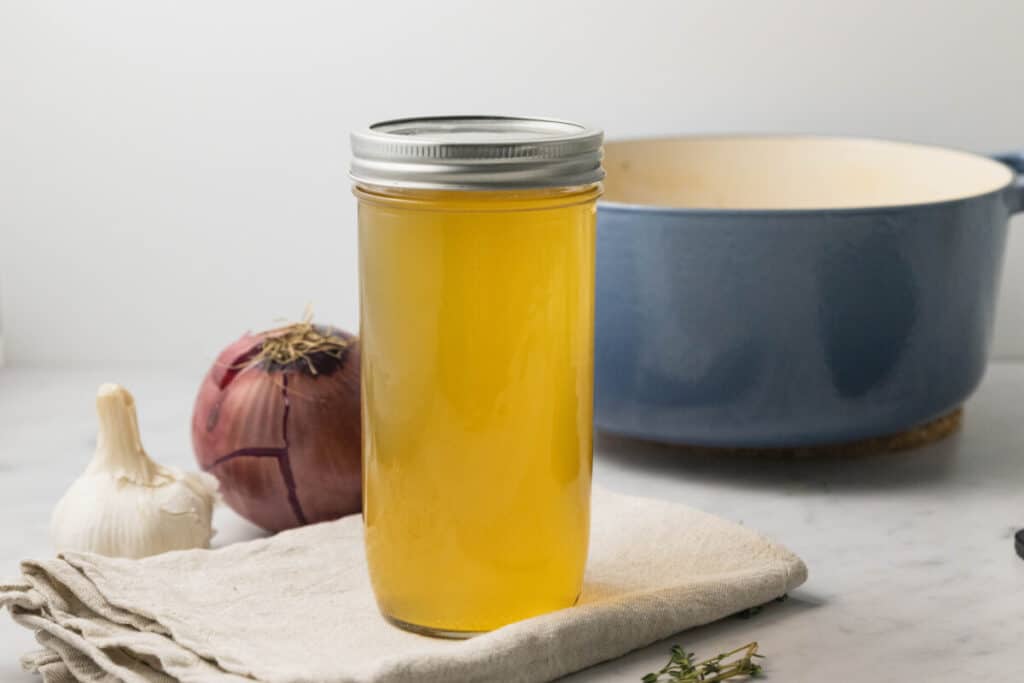
Final Thoughts
Incorporating homemade vegetable stock into your cooking is not only a step towards more flavorful and nutritious meals but also a stride towards a more sustainable and mindful way of cooking. Every time you use your stock, you’re reminded of the simplicity and satisfaction of making something beautiful and useful out of ingredients that would have otherwise been wasted.
Let me know if you try in the comments and let me know what you added to your homemade broth recipe. I’d love to know!
And connect with me on social! You can find me on Instagram and follow along on my Facebook Group for new recipes every week!

Easy Homemade Vegetable Broth Using Scraps
Here's how to make your own rich and flavorful homemade vegetable broth with this easy, waste-reducing recipe. Utilize kitchen scraps like celery, carrots, and herbs to create a versatile and healthy broth perfect for any recipe.
Ingredients
- Leftover vegetable scraps (peppers, onions, green onions, garlic, thyme, rosemary, carrots, celery, tomatoes)
- Water
- A couple of bay leaves (optional)
- Salt to taste
Instructions
- Keep a dedicated space in your freezer for saving vegetable scraps. When you have enough (a full large freezer bag is a good measure), you’re ready to start.
- In a large pot, combine your frozen veggie scraps with enough water to cover them by an inch. I recommend adding a couple of bay leaves for an extra layer of flavour.
- Bring the pot over medium heat until it reaches a gentle boil, then reduce the heat to let it simmer. Cover and cook for 3 hours; the longer it cooks, the more flavorful it will be.
- Once you’re satisfied with the taste, strain the broth through a fine mesh sieve to remove the vegetable pieces. Season with salt to your liking.

Christopher is a food and lifestyle expert, recipe developer and the content creator behind May Eighty Five. With years of experience in the kitchen, he also shares tips, tricks and how to’s that he has learnt over the years. Every week, he shares quick, simple and mostly healthy recipes along with some home and entertaining tips. You will find flavorful cocktails, delicious appetizers, tasty mains and some indulgent desserts. As a home decor enthusiast, he also likes to share simple DIY projects and simple tips for a beautiful home.


